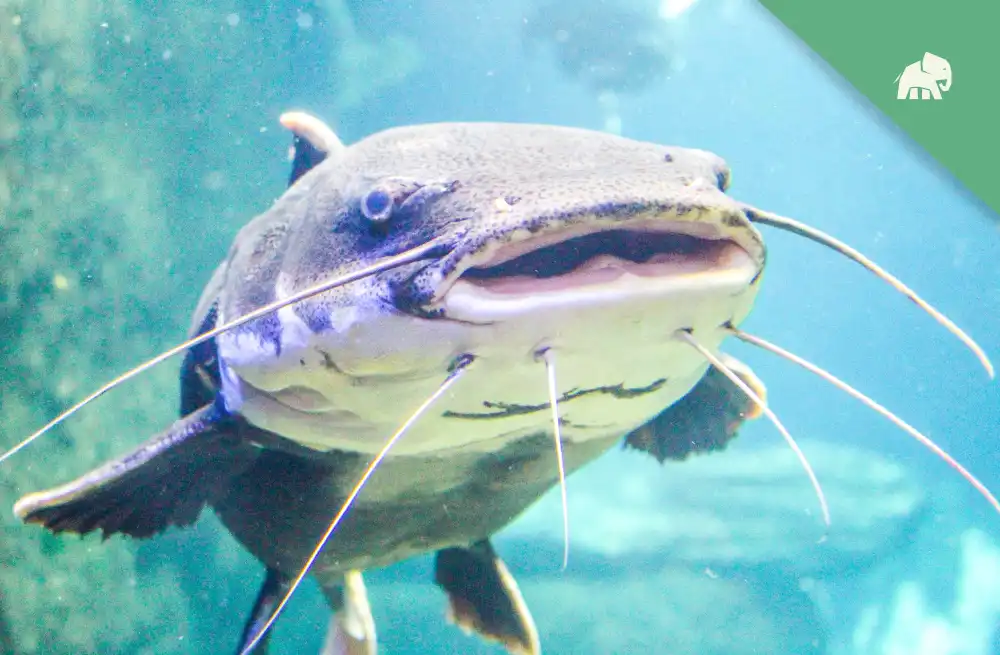The Red Racer Snake, also known as the Coachwhip Snake, is a species of nonvenomous snake that can be found in various regions of North America. It is known for its slender body, which can grow up to 8 feet in length, and its reddish-brown or tan coloration. The snake’s name comes from its resemblance to a coachwhip, a type of whip used to drive horses.
Red Racer Snakes are diurnal, meaning they are active during the day, and are known for their speed and agility. They are excellent climbers and can also swim well. Despite their intimidating appearance, Red Racer Snakes are not considered to be a threat to humans and are often welcomed in gardens and farms as natural pest control.
| Characteristic | Information |
|---|---|
| Scientific name | Coluber constrictor |
| Common name | Red Racer Snake |
| Size | 3 to 6 feet (0.91 to 1.83 meters) in length, males are slightly larger than females |
| Weight | 1 to 2 pounds (0.45 to 0.9 kilograms) |
| Color | Light brown, tan, or gray with darker brown or black blotches |
| Habitat | Dry, open areas such as deserts, grasslands, and woodlands |
| Diet | Carnivorous, feeds on small mammals, birds, lizards, and insects |
| Predators | Birds of prey, mammals such as foxes and coyotes, and larger snakes such as rattlesnakes |
| Venom | Mildly venomous, not considered a threat to humans |
| Reproduction | Eggs are laid in early summer, hatchlings emerge in late summer or early fall |
| Conservation status | Not currently liste |
Physical Characteristics of the Red Racer Snake
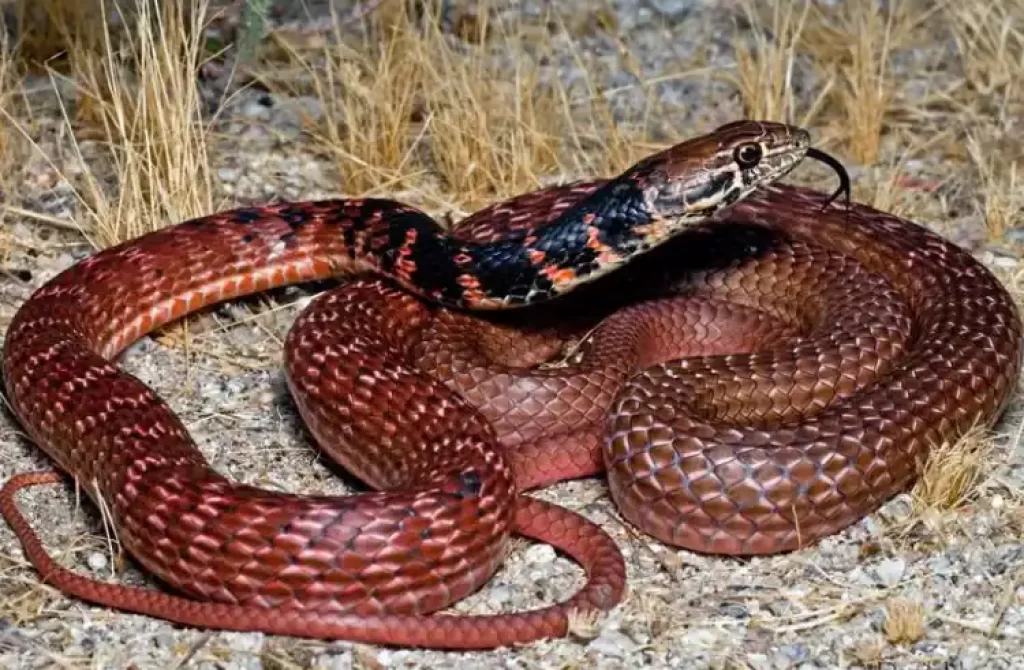
The Red Racer Snake is a slender, non-venomous snake found in North and Central America. It has several physical characteristics that make it unique and well-adapted to its environment.
Length
The average length of an adult Red Racer Snake is around 3 to 6 feet (0.91 to 1.83 meters) in length, with males usually being slightly larger than females. In terms of weight, they usually range from 1 to 2 pounds (0.45 to 0.9 kilograms).
Color and Pattern
The Red Racer Snake is named for its reddish-brown coloration, which is more pronounced on its head and neck. However, their overall coloration can vary from reddish-brown to gray or black, with some individuals having distinctive black spots or stripes on their back. The scales on the snake’s belly are usually a lighter color, ranging from yellow to white.
Scales
The Red Racer Snake’s body is covered in scales that are smooth to the touch and have a shiny appearance. These scales are arranged in rows, with each scale overlapping the one behind it. The overlapping scales provide the snake with a protective layer, making it more difficult for predators to injure it.
Head
The Red Racer Snake has a distinctive head that is slightly wider than its neck. Its eyes are large and positioned towards the front of its head, giving it good vision and depth perception. The snake’s nostrils are located on the sides of its snout, and it has a forked tongue that it uses to sense its surroundings.
Adaptations of the Red Racer Snake
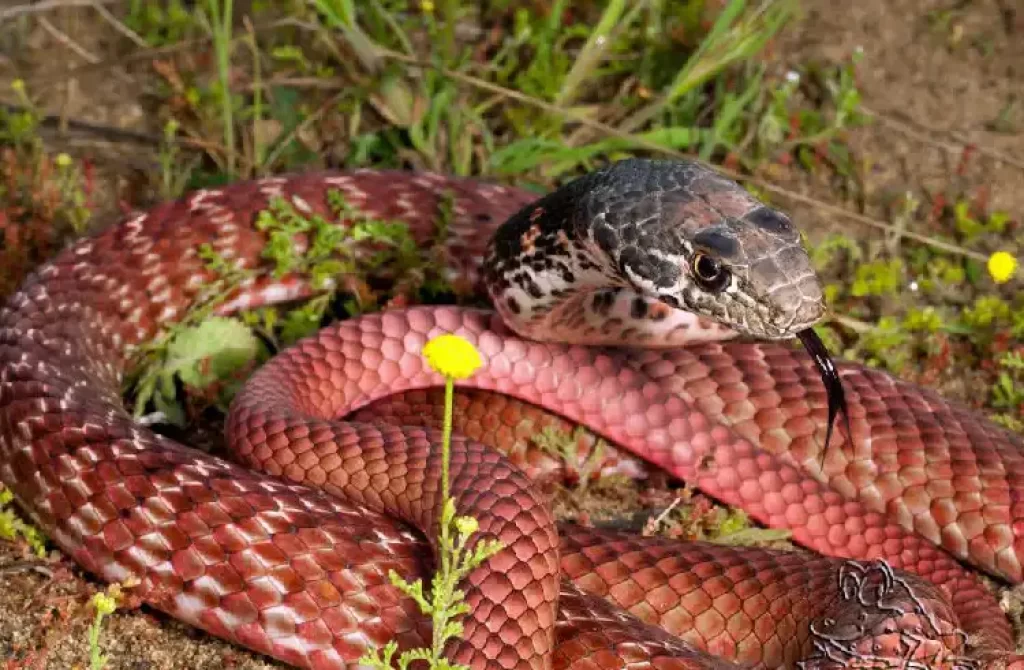
The Red Racer Snake has developed various adaptations to survive in its environment. In this section, we will discuss some of the most notable adaptations of the species.
Speed
One of the most distinctive features of the Red Racer Snake is its remarkable speed. Its long, slender body and strong muscles allow it to move quickly and efficiently through a variety of terrains. The snake can travel up to 10 miles per hour (16 kilometers per hour), making it one of the fastest snakes in North America.
Camouflage
Another adaptation of the Red Racer Snake is its camouflage. The snake’s coloration and patterning help it blend into its environment and avoid predators.
The species can have a variety of color patterns, including gray, brown, or green, and may have stripes, spots, or other markings. This camouflage helps the snake to avoid detection by predators and to sneak up on prey.
Hunting
The Red Racer Snake is a skilled hunter, using its senses to locate prey and its agility to catch it. The snake has good eyesight and an acute sense of smell, which it uses to track down prey. The species is also able to climb trees, allowing it to hunt in a variety of environments.
Once it has located its prey, the snake will strike quickly, using its powerful muscles to constrict and kill the animal before swallowing it whole.
Fact: The Red Racer Snake is known for its incredible speed and agility, with the ability to reach speeds of up to 10 miles per hour (16 km/h) and make sharp turns while in pursuit of prey.
Red Racer Snakes: Survival in the Wild
Habitat
Red Racer Snakes are often found in southwestern United States, Mexico, and parts of Central America. They are known to inhabit a variety of environments, including deserts, scrublands, grasslands, and woodlands. They can also be found in urban and suburban areas.
These snakes prefer dry, open areas with plenty of sunlight and are often found near rocks, logs, and other debris that provide cover.
They are especially common in areas with sandy soils and sparse vegetation. They are able to tolerate extreme temperatures, and can often be seen basking in the sun to regulate their body temperature.
Diet
Red Racer Snakes are carnivores and primarily feed on small mammals, birds, lizards, and insects. They use their excellent sense of smell to locate prey and their speed to chase and capture it. Once they have caught their prey, they use their sharp teeth to subdue and consume it.
Their diet varies depending on the availability of prey in their habitat, and they are known to be opportunistic hunters. Insects and small rodents make up the majority of their diet, but they have also been observed preying on larger animals such as rabbits and squirrels.
Interestingly, Red Racer Snakes are immune to the venom of some venomous snakes, such as rattlesnakes, and have been known to prey on them. This adaptation gives them a unique advantage in their habitat and helps to control the population of venomous snakes.
Red Racer Snakes are also known to swallow their prey whole, and their flexible jaws allow them to consume prey much larger than their own head. After consuming their meal, they may not need to eat for several days or even weeks, depending on the size of the prey.
Predators
The Red Racer Snake has a number of predators that can pose a threat to its survival. Birds of prey such as hawks and eagles are known to hunt snakes, including the Red Racer. Mammalian predators such as foxes, coyotes, and skunks also hunt snakes, and will not hesitate to eat a Red Racer if they come across one.
In addition to these predators, larger snakes such as rattlesnakes and kingsnakes will also prey on the Red Racer Snake. These larger snakes have an advantage over the Red Racer due to their size and strength, and are able to overpower and consume them.
To defend themselves from predators, Red Racer Snakes have developed a number of defensive strategies. When threatened, they will often hiss loudly, vibrate their tails, and even strike at the predator. They are also able to shed their tails as a means of escape, which can distract the predator and allow the snake to get away.
Venom and Bite
Despite its name, the Red Racer Snake is not venomous and poses no significant threat to humans. In fact, it is generally considered harmless and will only bite if it feels threatened or cornered.
However, like all snakes, the Red Racer can deliver a painful bite that can cause swelling, redness, and discomfort. In rare cases, the bite may lead to an allergic reaction or infection, particularly if the wound is not cleaned properly.
If you are bitten by a Red Racer Snake, it is important to seek medical attention immediately. The wound should be cleaned with soap and water, and a sterile dressing should be applied to prevent infection. Painkillers may be prescribed to manage the pain, and antihistamines may be given if an allergic reaction occurs.
The life cycle of a Red Racer Snake begins with hatching from an egg. Females lay clutches of eggs in moist soil or under debris, and the eggs incubate for about 2 months before hatching. Hatchlings are around 6 to 10 inches (15 to 25 cm) in length and grow quickly, reaching sexual maturity at around 2 to 3 years old.
Red Racer Snakes mate in the spring and summer, with males actively seeking out females by following scent trails. Once they locate a female, they will engage in a courtship ritual that involves rubbing against her and flicking their tongues. If the female is receptive, mating will occur and the male will leave shortly after.
Female Red Racer Snakes are capable of reproducing without a male in a process called parthenogenesis, although this is relatively rare. In such cases, the offspring are all female clones of the mother.
Interaction with Humans
Red Racer Snakes are generally non-aggressive and tend to avoid humans, but encounters can occur in areas where humans and snakes share the same habitat. It’s important for humans to understand how to safely interact with these snakes to avoid potential harm to both the snake and the human.
When encountering a Red Racer Snake, it’s important to remain calm and avoid startling the snake. Give the snake space to move away, and do not attempt to handle or capture the snake. If the snake feels threatened, it may become defensive and strike, potentially causing injury or transmitting venom.
In terms of human activities, the presence of Red Racer Snakes can sometimes be seen as a nuisance or danger.
They may be accidentally killed by vehicles or targeted for removal by individuals who fear them. However, these snakes play an important role in their ecosystem as predators and should be treated with respect and allowed to live freely in their natural habitat
Fun Fact: The Red Racer Snake is a non-venomous species, which means that while their bite may be painful, it is not typically dangerous to humans.
Conclusion
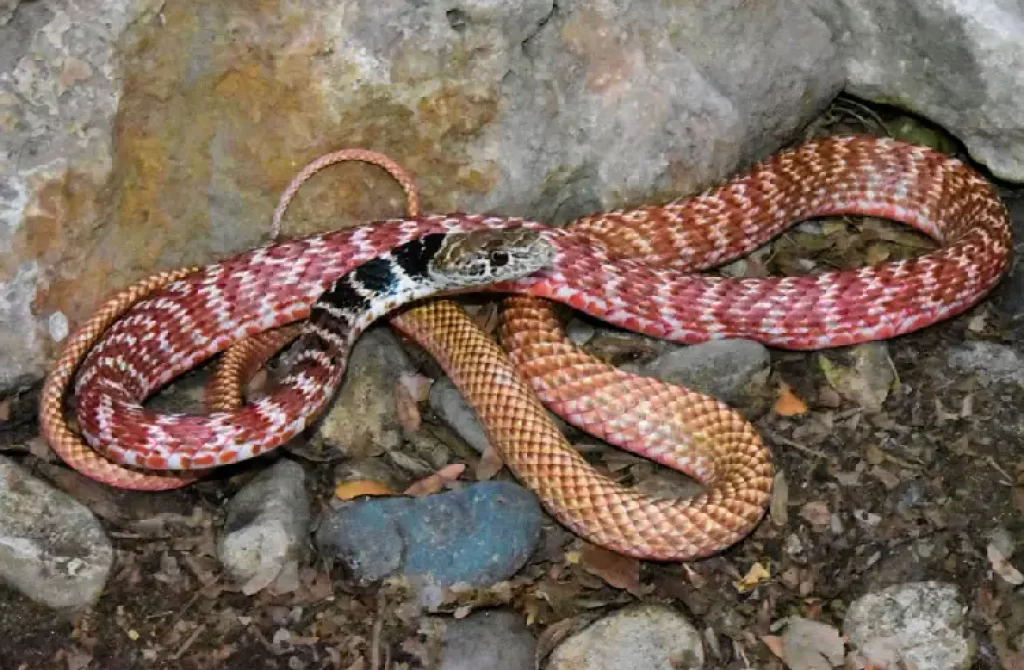
The Red Racer Snake is a fascinating and important species in the ecosystems of North America. Their physical characteristics, adaptations, and behaviors allow them to thrive in a variety of environments and make them an integral part of the food chain.
While they can be intimidating to humans, it is important to remember that they are not aggressive unless provoked and are actually beneficial to have around as they help to control pest populations. By understanding and respecting these snakes, we can coexist with them in a safe and harmonious manner.
Additional Resources
- “Snakes of North America: Eastern and Central Regions” by Alan Tennant
- “A Field Guide to Reptiles and Amphibians: Eastern and Central North America” by Roger Conant and Joseph T. Collins
- “Snakes Bible: The Ultimate Guide to Worldwide Snake Species: Venomous and Non-Venomous”
- “Snakes of the United States and Canada: Natural History and Care in Captivity” by John L. Coborn
These resources can provide further insight and information about the Red Racer Snake, as well as other species of snakes found in North America.
Frequently asked questions (FAQ) aboutRed Racer Snakes
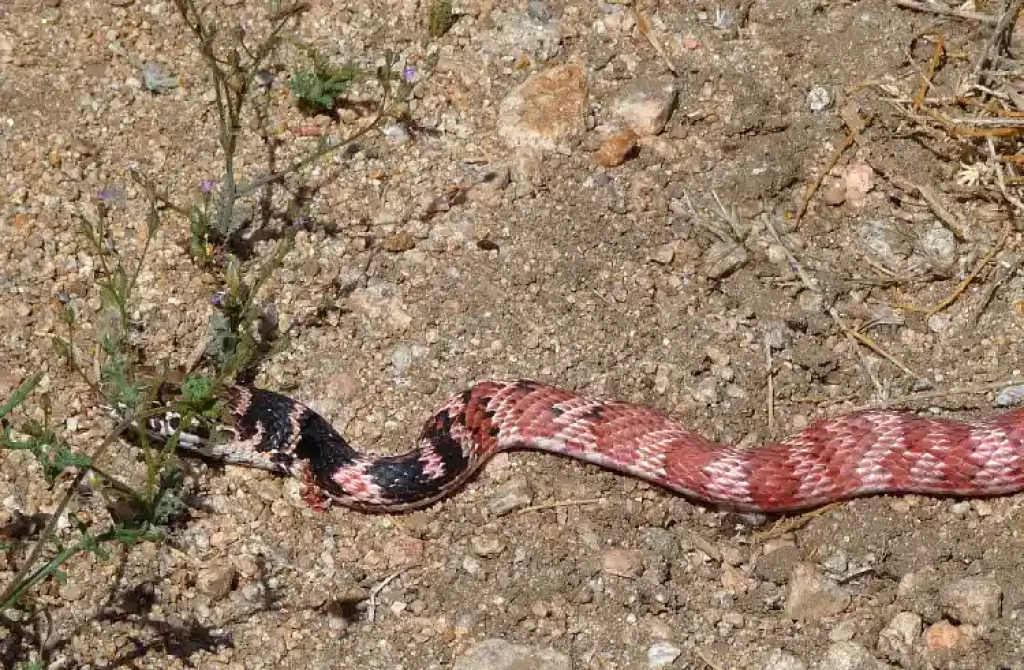
Q: Are Red Racer Snakes dangerous to humans?
A: While Red Racer Snakes are venomous, they are not considered to be a significant threat to humans. Their venom is relatively mild and typically only causes mild symptoms such as swelling and pain at the bite site.
Q: What should I do if I encounter a Red Racer Snake in the wild?
A: The best course of action is to give the snake plenty of space and allow it to move away on its own. Do not attempt to handle or provoke the snake, as this could lead to a bite.
Q: Are Red Racer Snakes protected by law?
A: Red Racer Snakes are not currently listed as an endangered species, but they may be protected by state or local laws. It is always best to check local regulations before handling or disturbing any wildlife.
Q: Can Red Racer Snakes be kept as pets?
A: While Red Racer Snakes can be kept as pets, it is important to note that they require specialized care and handling. They are not recommended for inexperienced or first-time reptile owners.
Q: What is the lifespan of a Red Racer Snake?
A: The lifespan of a Red Racer Snake can vary depending on a number of factors, including diet, habitat, and environmental conditions. In general, they are believed to live for several years in the wild, with some individuals living up to a decade or more.

